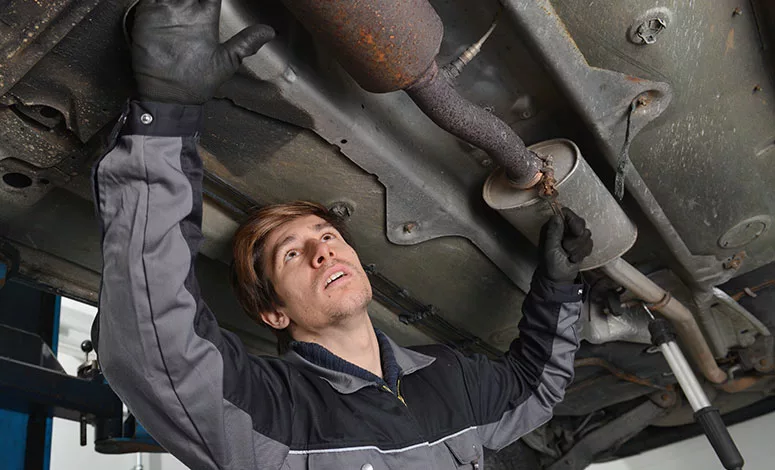In the world of modern diesel engines, ensuring efficient and environmentally friendly operation is paramount. Diesel particulate filters (DPFs) play a crucial role in trapping harmful particulate matter and preventing it from being released into the atmosphere. However, over time, these filters can become clogged and less effective. This is where a diesel particulate filter cleaner comes into play. In this post, we will delve into the proper usage of a particulate filter cleaner to help you maintain optimal engine performance and reduce emissions.
Diesel Particulate Filters
Diesel particulate filters are essential components designed to capture and store soot and other particulate matter produced during the combustion process in diesel engines. While these filters are effective in reducing harmful emissions, they can become obstructed with accumulated particles over time. A clogged DPF can lead to reduced fuel efficiency, decreased engine power, and increased emissions. To counter this, periodic cleaning is essential.
The Role of Diesel Particulate Filter Cleaners
A diesel particulate filter cleaner is a chemical solution formulated to break down and remove the accumulated soot and particulate matter from the filter. It aids in restoring the DPF’s original efficiency and prevents the need for premature replacement. Proper usage of a DPF cleaner can save you significant maintenance costs and contribute to a greener environment.
Step-by-Step Guide to Using a Diesel Particulate Filter Cleaner
Here is our step-by-step guide to cleaning your DPF:
- Safety First: Before you begin, ensure you are working in a well-ventilated area and are wearing appropriate protective gear, including gloves and eye protection.
- Choose the Right Cleaner: Not all DPF cleaners are created equal. Select a cleaner that is compatible with your engine and filter type. Consult your vehicle’s manual or a professional mechanic if unsure.
- Read the Instructions: Carefully read the manufacturer’s instructions on the cleaner’s packaging. Different cleaners might have varying application methods.
- Prepare the Vehicle: Park your vehicle on a level surface and engage the parking brake. Let the engine cool down before starting the cleaning process.
- Locate the DPF: The DPF is usually situated in the exhaust system. Refer to your vehicle’s manual to find its exact location.
- Access the DPF: Depending on your vehicle’s design, you might need to remove certain components to access the DPF. Follow proper procedures to avoid causing any damage.
- Apply the Cleaner: Follow the manufacturer’s guidelines to apply the cleaner to the DPF. This might involve spraying the cleaner into the DPF or adding it to the fuel tank. Ensure accurate measurements as per the instructions.
- Start the Engine: With the cleaner applied, start the engine and let it idle for the prescribed duration. This allows the cleaner to circulate through the exhaust system and break down the accumulated particles.
- Rev the Engine: Following the instructions, rev the engine to the specified RPM range. This helps create turbulence in the exhaust system, aiding the cleaner in dislodging and breaking down stubborn soot.
- Finalize the Process: Once the cleaning process is complete, turn off the engine and let it cool down.
- Reassemble: If you had to remove any components to access the DPF, reassemble them securely.
Benefits of DPF Cleaning Services
For those who prefer professional assistance, DPF cleaning services offer a comprehensive solution. These services are performed by trained technicians who use specialized equipment and cleaners to ensure a thorough and effective cleaning process. Opting for DPF cleaning services can provide the following benefits:
- Expertise: Trained technicians understand the intricacies of DPF systems and can perform meticulous cleaning.
- Time-Saving: DPF cleaning services are usually quick, minimizing vehicle downtime.
- Prevention: Regular cleaning can prevent DPF clogging and extend its lifespan.
- Emission Reduction: Properly cleaned DPFs contribute to lower emissions, promoting environmental responsibility.
- Performance Restoration: Cleaner filters lead to improved engine performance and fuel efficiency.
Properly using a diesel particulate filter cleaner is essential for maintaining the health and efficiency of your vehicle’s emission control system. Whether you choose to undertake the cleaning process yourself or opt for professional DPF cleaning services, regular maintenance will lead to a greener environment, enhanced engine performance, and reduced maintenance costs in the long run. So, embrace the power of DPF cleaners and ensure your diesel engine runs smoothly while keeping the air clean.

